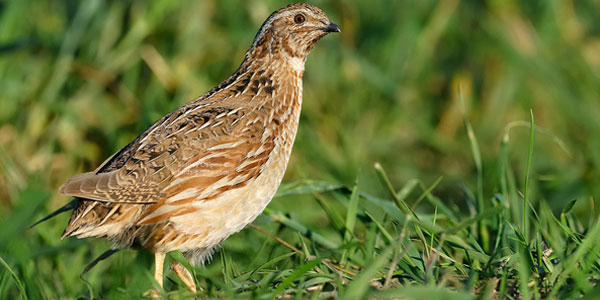SHARE WITH FRIENDS:
To date, quail rearing and breeding has become an economically viable industry. Quail are very productive and can lay up to 250–255 eggs a year.
About 70-80% of the eggs hatch. It develops very quickly and is resistant to various diseases.
True, the quail is light in weight and the eggs are small. But due to the strange healing properties of quail meat and eggs, it is always in high demand.
The quail lays 250-300 eggs a year. The eggs are small, three equal to one chicken egg. Eggs weigh 8–14 grams, and slaughtered quail meat weighs 100–120 grams. The quail begin to lay eggs at the age of 50-60 days, and can even lay eggs at the age of 40 days. Quail eggs are several times more useful and have wonderful properties than chicken. Quail eggs contain 5 times more potassium, 4,5 times more iron, V than chicken eggs1 and V2 vitamins are 2,5 times more, and vitamin A, nicotinic acid, phosphorus, copper, lysozyme, silver and other amino acids are also abundant. Protein content is also much higher than other poultry eggs. For example, if the protein content of chicken eggs is 55,8%
Care. There are specific aspects to feeding and caring for quail at home. First of all, it is necessary to study them very well. These birds do not like noise. Because they occupy places where the grass grows thick and tall in freedom. For this reason, it is advisable to cover the quail cages (lids) on three sides with a noise-proof fabric.
The cage in which the quail are kept should be free of wind blows, loud noises and strong light. It is necessary to put a heap of hay into the cage, quail love to get between them. From time to time they need to be replaced with new ones.
Large quails are fed two to three times a day. The composition of the feed consists of grain flour (a mixture of barley, oats, crushed corn flour) - 60%, protein mixture (cottage cheese, minced fish) - 35% and mineral mixture (eggshell, chalk). appropriate. Usually quails can be given soy and sunflower shrot (kunjara), but seed kunjara cannot be given.
Egg-laying pupae are fed up to five times a day for the first week. Gradually reduce until one and a half months and move on to feeding twice. In the summer, in addition to each bird, it is recommended to give an average of about ten grams of crushed barley grass per day. There should always be clean water in the container.
Read more: MEDICAL EXAMINATION is an important factor in reproductive health
After two months, the weight of quail stops growing. At this time, pomegranate quail can weigh up to 400 grams.
For those who intend to get a lot of eggs, it is recommended to feed up to 50 quail per square meter. Quail eggs are sensitive to cold, so it is advisable to move them to a warmer place as soon as possible.
Useful properties of quail eggs: normalizes human blood pressure and strengthens the immune system; improves cardiovascular function; prevents hair and tooth loss; has a positive effect on nervous system disorders, anemia, hypertension, bronchial asthma and diabetes; prolongs life, improves vision; with its help it is possible to treat many diseases such as gastritis, gastric and duodenal ulcers, pneumonia, inflammation of the pancreas, angina.
Quail eggs can be stored at room temperature for 30 days and in the refrigerator for up to 60 days. Researchers and doctors have found that consuming quail eggs does not harm or adversely affect any organ in the human body.
For those who want to grow quail meat, it is recommended to take care of 20-30 quails per square meter. Its meat is high in calories, superior to rabbit and chicken in terms of nutrition, taste and diet. It is consumed in diseases of the heart, stomach, liver, lungs, kidneys, helps in the treatment of chronic diseases, increases vital tone and strengthens bones.
Particular attention should be paid to keeping the temperature in the quail cage regularly around 25 degrees. But adult quail can easily spend the winter, even in unheated cages. The high temperature in their body, the dense hot feathers and the penetration into the hay protects them from the cold.
Typically, a quail is fed for eight months, of which eggs are laid for six months, and slaughtered for meat after eight months. One quail lays about 130 eggs in six months. It is possible to estimate the income by multiplying this by the number of quails. For example, if you have 30 fashionable quails in 200 days, you will spend an average of six pounds of feed per day to feed it. If you feed that many quails properly, you can get up to 4800 eggs a month.
Prevention of quail diseases. It is recommended to regularly clean the squash stuffed with quail and disinfect it frequently. In addition, the caregiver must pay special attention to strict adherence to sanitary and hygiene requirements.
Read more: IMPORTANT TIPS FOR HAIR CARE
